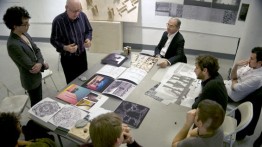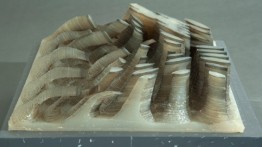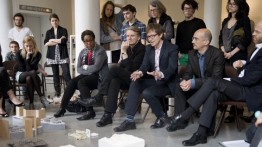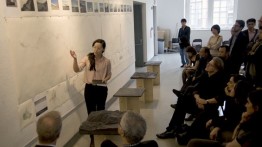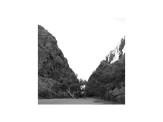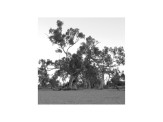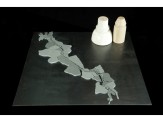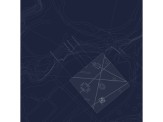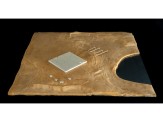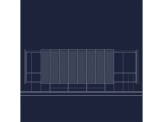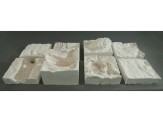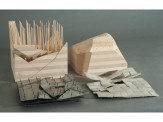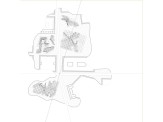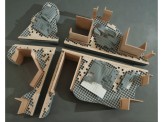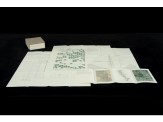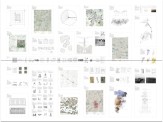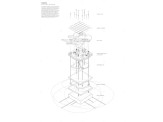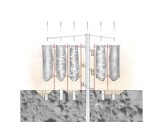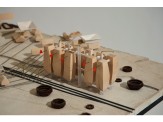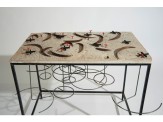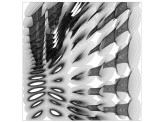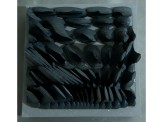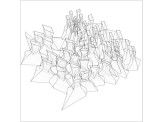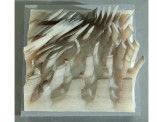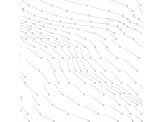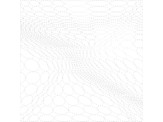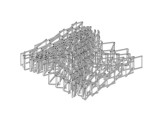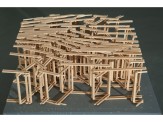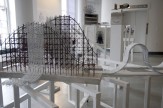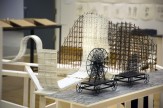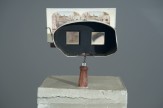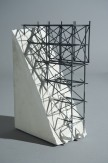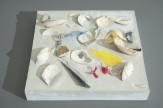Selected Undergraduate Design Studio Projects--Thesis 2011-12
THESIS
Professors Anthony Vidler, Lydia Kallipoliti, Elisabetta Terragni & Stephen Rustow (with Kurt Forster, Fall and David Allin, Spring)
The Thesis studio is organized to support each Fifth Year student in the discovery of a broad topic of research and a valid axis of inquiry that will occupy the entire school year, gradually leading to a concisely defined project in the Spring term. Pedagogically, the claim of the thesis, the refinement of an appropriate working method and the elaboration of a critical position with respect to the research are the most significant goals of the year. This however in no way diminishes the enthusiasm and self-imposed pressure that students bring to the development of an architectural project that attempts to synthesize the year’s exploration.
The fall semester began with a series of brief “warm-up exercises” wherein the juxtaposition of a seemingly random group of buildings and objects was intended to help students extrapolate a plausible hypothesis along some clearly indentified line of inquiry. The semester was punctuated by a series of rich and suggestive lectures by Visiting Professor Kurt Forster, which provided a succinct overview of relevant methodological questions by tracing the evidence for an operative thesis in a series of projects by architects as diverse as Karl Friedrich Schinkel, Le Corbusier and Frank Lloyd Wright.
As students began to determine their individual research agendas a broad range of subjects emerged; nevertheless, certain underlying similarities could be traced among groups of projects. For example, the significance of built or implicit axial relationships in the natural landscape was explored in settings as varied as the demilitarized zone that divides the two Koreas; the Australian desert site of the first continental telegraph; the regional habitats traversed by the transcontinental Canadian highway; and the trans-hemispheric latitudinal connection that juxtaposes the representational spaces of Lima, Peru with those of Washington D.C. Similarly, a number of research efforts coalesced around the documentation of complex formal patterns in, for example, the traces of tools used both to map and to exploit the plains atop the Ogallala Aquifer; or the transposition of urban grid fragments to the geological strata of the Colorado plateau; or the random web of neighborhood sites where court witnesses have been murdered in Brooklyn. Yet another series of investigations sought to isolate the formal properties and generative potential of various architectonic fragments, in sources that range from the ecclesiastical structures of the French Gothic to the housing blocks of Manhattan’s Lower East Side. Finally, a number of students began to experiment directly with specific materials and to examine their intrinsic formal qualities.
By mid-term review, students began to draw from their research a line of inquiry that would clarify the thesis as a concise claim and define the project to follow. While the range of individual projects is ultimately as diverse as the students themselves, here again one may distinguish three broad types of proposals. First there are those who posit their thesis as a project of documentation in which a deep understanding of a place, process or phenomenon in the real world will be presented in descriptive and analytical terms. Their work has been focused on fashioning the set of documents and the hierarchical organization of material that most effectively conveys the narrative of their understanding. Next are those who see their project as a kind of experiment, or series of experiments, in which the creation of a controlled condition throws into relief the behavior of some variable. Their efforts are concentrated on refining the experimental procedures and the methods of observation so that some predictive understanding of behavior can be presented, whether the subject be light, structural stability or interactivity with virtual stimuli. Finally, there are those who are determined to push their inquiry to a conclusion in which a clear design project is discerned, with the questions of site, program, form and materiality all embodied in a suite of conventional architectural drawings and models.
In all of these theses there is strong evidence of structured design thought; taken together they document the breadth and diversity of interests that animate this graduating class.
Projects
-

Terra Australis Incognita
-
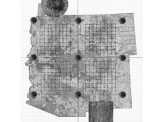
Two Places are One-One Place is Two
-
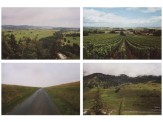
Cultivating the Map
-
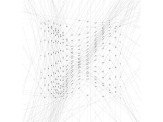
Explorations in Material Geometry
-
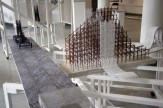
Coney Island
Back
Terra Australis Incognita
Terra Australis Incognita
Jessica Russell
The Overland Telegraph Line, constructed in 1872, ran from the southern to the northernmost tip of Australia. This straight line cut through the heart of Australia's vast desert interior, connecting the country via underwater cable to Java, Indonesia and then across land through Asia and the Middle East into Great Britain. When Darwin was bombed by the Japanese in 1942, the Overland Telegraph Line was severed by the citizens of the city out who feared this infrastructure would be used to take over the country in the event of an invasion. With the cutting of the line, the countries’ voices were severed and history dismembered and disembodied. My thesis design is five theatres that rest on a voided site in the city They function as an archive of memory, a site for stories dispossessed and those yet to be written.
Two Places are One-One Place is Two
Two Places are One–One Place is Two
Sean Gaffney
The ground is constructed. Innumerable pieces of earth form together to create a vast composite whole. Its vastness can’t be captured by human limits. It must be broken down to be understood. My thesis conflates two sites, transposing one to into the other in order to produce a new composite. This new terrain is the product of three imposed limits: an idea of measure, and idea of extraction and an idea of recomposition. This is explored in two separate case studies. Both studies conflate a site in the wilderness and a site in the city. One takes place immediately in space, while the other takes place over a much longer time.
Cultivating the Map
Cultivating the Map
Daniel Wills
This thesis finds itself in the territory of the map, proposing that the map is also a generative tool. Using the drawing as fertile ground, a predictive organization of territory was made through the design of four new tools for the management of natural resources in the Great Plains, a region threatened with the cumulative adverse effects of industrial farming. Each tool proposes new ways of drawing the land and acts as an instrument that reveals the landscape's new potential.
Explorations in Material Geometry
Explorations in Material Geometry
Rolando Vega
My thesis investigates relationships of aggregation of a field in relationship to the development of an architectural language of material and the forces that shape tectonic relationships (structural, geometric, spatial, programmatic). I am interested in crystallizing the moments of difference, a continuity through fragmentation that pushes and pulls elements into new and unique organizations.
Coney Island
Coney Island: Shadows of a Spectacle
Andres E. Larrauri
The place of fantasy, ease, and plenty has many names. Its form and image necessary for its existence beyond the physical, a construction that is constant in the re-telling of their legend. These fantasies and their aforementioned spaces/tectonics become incarnations in our own pleasure/leisure seeking society, modern places of pilgrimage that provide the overwhelming stimulation only possible in dreams. With Coney Island, what once was a simulacrum of fantasy, real fantasy in and of itself, has become a ruin. This thesis explores its ruin in close relationship to its previous and nostalgic image to create an exhibitionary process of embalmment, which crystallizes the melancholic atmosphere of its demise and celebrates the passing of its architecture and image. Proposed as a touring exhibition, the artifacts would disseminate its current state much like its former self disseminated various technologies and images of its grandeur.

